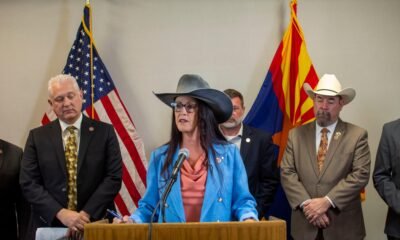ADOT
Area Crashes Surge This October, Reveals Study Findings

Maricopa Police and Fire Respond to Crash as Traffic Surge Approaches
At approximately 11 a.m. on August 10, 2024, Maricopa police and fire units responded to a reported car crash at the intersection of Smith-Enke and John Wayne Parkway. This incident foreshadows the traffic challenges the city anticipates with the arrival of fall.
As October draws near, Maricopa expects an influx of vehicles due to the seasonal return of “snowbirds.” This time of year not only signals cooler weather but also marks a significant peak in traffic incidents. Recent data from the Arizona Department of Transportation reveals that Maricopa experienced more car crashes last year than five entire counties combined, excluding the notoriously hazardous State Route 347.
The Maricopa Association of Governments (MAG) 2022 crash data underlines October as the most hazardous month for motorists in the region, with the highest rates of crashes, injuries, and fatalities. In October 2022 alone, there were 8,147 crashes, resulting in 3,692 injuries and 77 fatalities. Comparatively, July—a month typically marked by a lack of seasonal traffic—recorded 6,105 crashes, with 50 fatalities, reflecting a 33% increase in incidents from summer to fall.
A recent study by Sacramento’s Auto Accident Team ranked the Phoenix metro area, including Maricopa, as one of the most dangerous for fall driving. Tucson was ranked No. 2, while the greater Phoenix area took the sixth position. The data indicated a 12.4% rise in fatal crashes from summer to fall in Phoenix, which recorded 1,311 fatal crashes in the autumn.
“Our aim was to identify regions most affected by seasonal changes in driving conditions,” said Leo Danconia, CEO of Auto Accident Team. Factors such as shorter days and cooler weather contribute to increased collision risks on the roads.
City officials were unable to provide exact figures on the number of seasonal residents migrating to Maricopa. However, Monica Williams, a spokesperson for the city, mentioned a diminishing trend in seasonal population fluctuations as more people choose to reside in Maricopa year-round. The Canada Arizona Business Council estimates around 100,000 Canadian snowbirds frequent Arizona annually.
In response to the increased traffic from returning seasonal residents, Williams noted that the city employs a comprehensive traffic management strategy. A contract with a traffic engineering firm ensures around-the-clock monitoring of traffic signals, particularly on John Wayne Parkway. “Our systems can be automated based on real-time data,” Williams explained, although full automation is not fully implemented due to possible safety concerns associated with sudden light changes.
To enhance traffic management further, the city is working on completing fiber optic connections, enabling engineers to remotely control traffic signals and monitor intersections beyond the main thoroughfare.


















